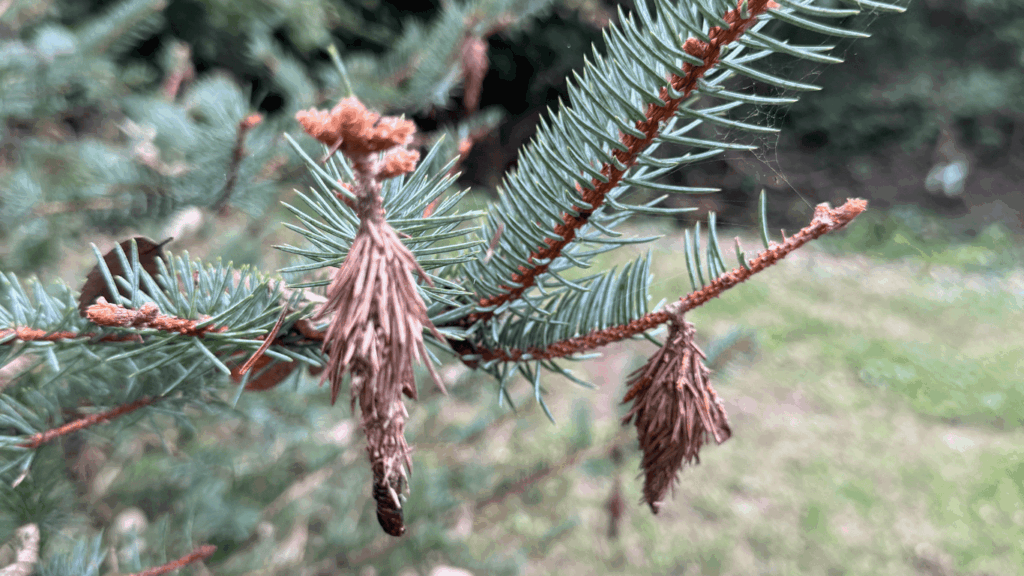
If you’ve noticed small, pinecone-like bags hanging from your trees and shrubs, you might be dealing with bagworms — a common pest that can cause significant damage to evergreens and other plants across Missouri. Understanding their life cycle and how to manage them can help protect your landscape from future infestations.
What Are Bagworms?
Bagworms are the larvae of a moth species that construct distinctive silk bags covered with bits of leaves, twigs, and needles. These camouflaged homes hang from branches and serve as both protection and shelter. While they might look harmless, each bag can contain hundreds of eggs that will hatch the following spring, restarting the cycle.
Why October Is the Right Time to Act
By October, bagworm larvae have stopped feeding and sealed themselves into their bags to pupate and lay eggs. This makes fall the best time to remove and destroy the bags before the next generation hatches.
Overwintering:
The eggs inside these bags will survive through winter and hatch in late May or early June. Removing the bags now prevents hundreds of new larvae from emerging in the spring.
Prevention:
Early removal breaks the life cycle — it’s a simple, eco-friendly step that dramatically reduces infestations for the coming year.
How to Identify and Remove Bagworms
Step 1: Inspect Your Plants
Check trees and shrubs for hanging, pinecone-like bags. They are often about 1–2 inches long and blend in with foliage.
Step 2: Remove the Bags
Use scissors or pruning shears to clip the bags off branches. For smaller infestations, manual removal is often all you need.
Step 3: Destroy the Bags
Don’t leave them on the ground! Place the collected bags into a sealable plastic bag filled with soapy water to drown the eggs. Alternatively, tightly seal and dispose of them in the trash.
Step 4: Stay Vigilant
Inspect your plants again in late spring and early summer to catch any new infestations before they spread.
Life Cycle Summary
- Late May–June: Eggs hatch, and larvae begin feeding on leaves and needles.
- Summer: Larvae continue feeding, causing significant defoliation.
- Early Fall: Larvae stop feeding, pupate, and lay eggs within their bags.
- Winter: Eggs overwinter inside the bags until they hatch the following spring.
Pest Management Tips
- Check plants regularly to detect infestations early.
- Remove bags by hand in fall or winter before eggs hatch.
- Use pesticides responsibly — insecticides are only effective in early summer when larvae are actively feeding.
- Consult professionals if an infestation becomes severe. Blue Sparrow can assess your landscape and apply targeted treatments to keep your trees and shrubs healthy.
Take Action Now
Bagworms may be small, but the damage they cause can be significant if left untreated. October is the best time to stop their life cycle and protect your landscape for the next growing season.
If you’ve found bagworms on your property, contact Blue Sparrow Lawn & Landscape — we’ll help you manage the problem safely and effectively before it spreads.
